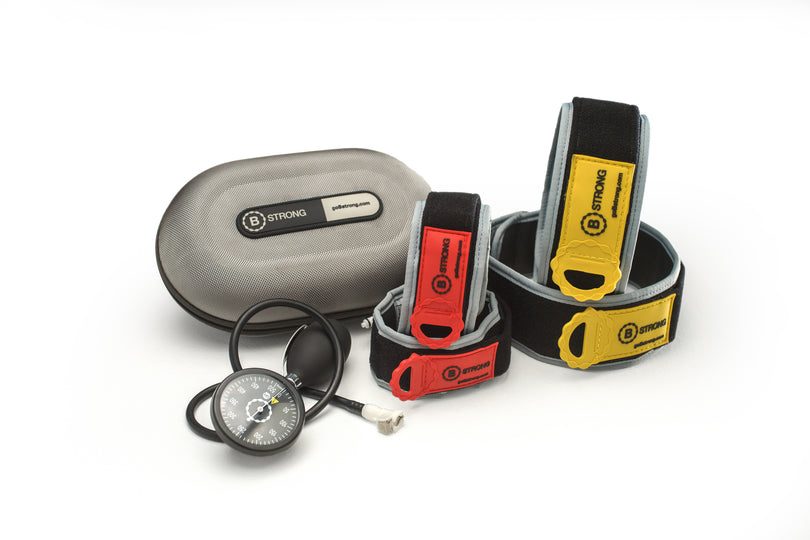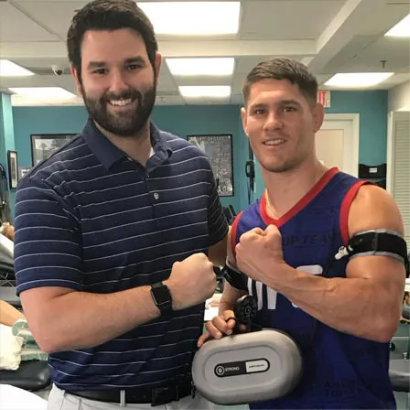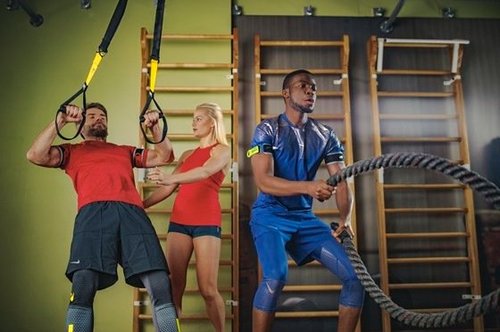Age impacts our bodies. This can’t be denied. As we grow older, we tend to notice it takes longer to recover following trying a new sport or activity. Our first step isn’t quite as fast as it used to be or even something as simple as going up and down stairs requires more effort.
When we start to look at sarcopenia (muscle loss due to aging), this is again something that can’t be denied. We see the body’s physical capacities start to become compromised at around age 30, but pronounced changes start to occur after 50 years old with more than 15% strength loss per decade. (1)
Muscle mass loss occurs due to decreased muscle fibers, fiber size, and motor units. As atrophy occurs and muscle fibers start to get smaller, this occurs disproportionately, where fast twitch muscle fibers are more prone to atrophy. From 25 to 75 years old approximately 50% of fast twitch muscle fibers will be lost where slow twitch fibers are less impacted. (1)
Historically, high intensity resistance exercise (~70% of 1 rep max) has been used to cause prolonged activation of fast twitch fibers which have greater capacity for hypertrophy. (2) In older adults, exercising at this intensity may be unrealistic or unsafe.
Enter B Strong blood flow restriction (BFR) training. With BFR, we have the ability to exercise under low loads (~20% of 1 rep max) by partially restricting blood flow to the muscle. One of the local mechanisms that occurs with BFR is recruitment of additional motor units as the initial units fatigue with exercise. Due to decreased oxygen to the muscle, fast twitch muscle fibers are recruited with the exercise. (3)
BFR will stimulate more motor units with exercise and impact fast twitch muscle fibers, which are negatively impacted with sarcopenia. All of this can be performed very safely for older adults, while still getting the benefits that are typically only obtained with high intensity exercise. BFR provides an opportunity to minimize muscle loss with age and allow maintenance of function. This is also just looking at the local muscular impact let alone the hormonal benefit.
If you are an older adult, adding BFR to a training regimen can be influential in maintaining strength and function as you age. If you work with clients in a health or wellness setting, incorporating BFR training into your clients’ programs is a powerful way to maximize outcomes.
Source:
ONE HARMONIC MOTION
References:
- Keller K, Engelhardt M. Strength and muscle mass loss with aging process. Age and Strength Loss. Muscles Ligaments Tendons J. 2014: 3; 346-50.
- Takarada Y, Takazawa H, Sato Y, et al. Effects of resistance exercise combined with moderate vascular occlusion on muscular function in humans. J Appl Physiol. 2000: 88; 2097-2106.
- Pope ZK, Willardson JM, and Schoenfeld, BJ. Exercise and blood flow restriction. J Strength Cond Res. 2013; 27: 2914–2926.
















